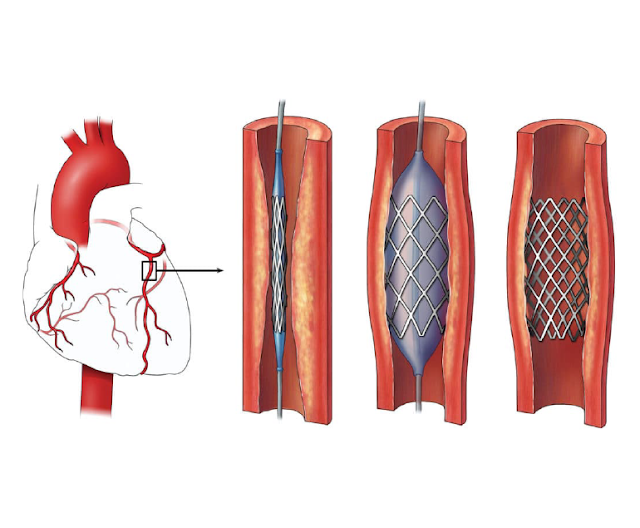Dr Ramji Mehrotra | Why do you need a stent in your heart?
A stent is a tiny, expandable metal mesh tube that is used to prop open narrow or blocked arteries in the heart. Stents are commonly used in the treatment of coronary artery disease, a condition in which the arteries that supply blood to the heart become narrowed or blocked due to the build-up of plaque.
When plaque builds up inside the arteries, it can restrict blood flow to the heart, leading to chest pain or other symptoms. In some cases, the blockage can be so severe that it can cause a heart attack. A stent can be used to help restore blood flow and prevent these complications.
During a stenting procedure, a small incision is made in the groin or arm, and a thin, flexible tube called a catheter is inserted into the artery. The catheter is then guided to the blocked artery in the heart using imaging technology. Once the catheter reaches the blockage, a small balloon is inflated to widen the artery and improve blood flow. The stent is then placed over the balloon and expanded, holding the artery open and improving blood flow. The balloon is then deflated and removed, leaving the stent in place.
According to leading cardiothoracic surgeon Dr Ramji Mehrotra, there are several reasons why a stent may be necessary to treat coronary artery disease:
1. Relieve chest pain: One of the most common symptoms of coronary artery disease is chest pain, also known as angina. By opening up the blocked artery with a stent, blood flow to the heart muscle is improved, which can reduce chest pain.
2. Prevent heart attack: A stent can help prevent a heart attack by restoring blood flow to the heart. If an artery is completely blocked, a heart attack can occur due to lack of oxygen to the heart muscle. By placing a stent, the artery can be reopened, preventing a heart attack.
3. Improve heart function: If the heart muscle is not receiving enough blood and oxygen due to blocked arteries, it can lead to a decrease in heart function. By restoring blood flow with a stent, the heart can function more efficiently and effectively.
4. Treat atherosclerosis: Atherosclerosis is a condition in which plaque builds up inside the arteries, causing them to become narrow and restricting blood flow. A stent can be used to prop open the artery and improve blood flow in people with atherosclerosis.
5. Prevent restenosis: Restenosis is a condition in which the artery becomes narrow again after a stenting procedure. Newer stents are designed to release medications that help prevent restenosis and keep the artery open.
Dr Ramji Mehrotra is of the opinion that stents are not a cure for coronary artery disease. Lifestyle changes, such as diet and exercise, as well as medications, such as blood thinners and cholesterol-lowering drugs, are also important in the treatment and management of coronary artery disease. In some cases, additional stenting procedures or bypass surgery may also be necessary.
In conclusion, a stent may be necessary to treat coronary artery disease by opening up blocked arteries and improving blood flow to the heart. While stenting is generally considered safe, it is important to discuss the risks and benefits of the procedure with your doctor, as well as other treatment options that may be appropriate for your individual situation.


Comments
Post a Comment